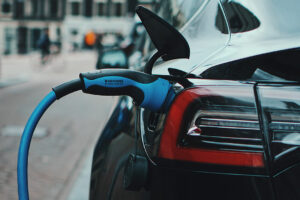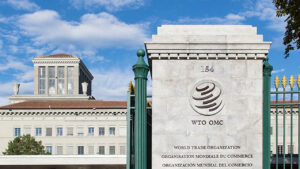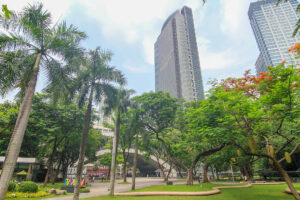EV way of life

I read recently a story by Rachel Wolfe in the Wall Street Journal on how she and a companion rented an electric car for a four-day road trip but ended up spending more time charging the vehicle than they did sleeping. Also, their 2,000-mile (3,200 kilometers) round trip to Chicago from New Orleans and back cost them $175 (P10,150 at P58:$1) in charging services.
The distance of their four-day trip is like three round trips to Laoag, Ilocos Norte from Manila (500 kilometers one way or 1,000 kilometers round trip), plus a bit of driving around Northern Luzon. And for such a trip, with a vehicle capable of doing 12 kilometers per liter, fuel consumption will be roughly 270 liters. For a diesel-fed vehicle, total fuel cost at P74 per liter will be around P20,000.
Going over these numbers, an electric vehicle seems to make sense with respect to “energy” cost, considering high fuel prices nowadays. And, with no emission to boot. The turnoff, however, is that while electric vehicles or EVs are now available in the local market, their sticker prices are still high compared to regular vehicles. Worse, there are only a few charging stations operating in and out of the metropolis.
“I figured driving the brand-new Kia EV6 I’d rented would be a piece of cake,” wrote Wolfe. “Over four days, we spent $175 on charging. We estimated the equivalent cost for gas in a Kia Forte would have been $275, based on the AAA average national gas price [at the time]. That $100 savings cost us many hours in waiting time,” she added.
Her main issue was the lack of charging stations, particularly quick chargers, in many places along their way. Secondary to this was the long charging times if and when a charger is actually available. In contrast, here and abroad, fuel stations dot main highways and thoroughfares, and filling up doesn’t usually take more than 10-15 minutes. With EVs to date, the compromise is on one’s time, and its cost.
Based on the EV’s estimated battery range of up to 310 miles, Wolfe initially planned to charge the EV once or twice each day and plug in near the hotel overnight. During the trip, however, they realized that many chargers require around eight hours for a full charge, and only a few fast chargers can do 80% charge in 20 to 30 minutes — way longer than stopping for gas, Wolfe noted.
Thus, Wolfe’s trip was stressful, to say the least. She noted that when they pulled out of New Orleans, the car’s battery level ticked down “15% over 35 miles,” describing the matter as “disconcerting.” So, they decided to pull over and charge. And while a “quick charge” was estimated to take only five minutes, based on their calculations, the car dashboard indicated an hour. In the end, after unplugging, they gained “a measly 13% [charge] in 40 minutes.”
“Our real troubles begin when we can’t find the wall-mounted charger at the Kia dealership in Meridian… Not many people use the charger, the mechanic tells us when we return. We soon see why. Once up and running, our dashboard tells us a full charge, from 18% to 100%, will take three-plus hours,” Wolfe wrote.
Given the long charging times, by the time the pair reached their next charging station, at a Mercedes-Benz dealership outside Birmingham, Alabama, “we’ve already missed our dinner reservations in Nashville — still 200 miles away,” Wolfe wrote. “We are beat when we finally stumble into our Nashville hotel at 12:30 a.m.”
There is no doubt, however, that with EV, one saves a lot on fuel costs. But less money for fuel also means more time spent charging the vehicle. Also, the unpredictability of battery consumption and the limited availability of charging stations make the switch to EV an even more difficult choice.
Apparently, even weather is a factor. Wolfe and company noted that “as intense wind and rain whip around us, the car cautions, ‘Conditions have not been met’ for its cruise-control system. Soon the battery starts bleeding life. What began as a 100-mile cushion between Chicago and our planned first stop in Effingham, Ill., has fallen to 30.” She added, “Back on the road, we can’t even make it 200 miles on a full charge en route to Miner, Mo. Clearly, tornado warnings and electric cars don’t mix. The car’s highway range actually seems worse than its range in cities.”
Wolfe’s article noted that factors that affect fuel consumption in ordinary cars also impact battery drain on EVs. Average speed, altitude changes, and driving on inclines, passenger and cargo weight, and wind resistance as well as rain all affect how an EV and its battery perform. And with EVs, to save on battery charge, some electric accessories must be turned off.
“To save power, we turn off the car’s cooling system and the radio, unplug our phones and lower the windshield wipers to the lowest possible setting while still being able to see. Three miles away from the station, we have one mile of estimated range,” she wrote, with the dashboard reminding the pair to “Charge, Urgently!”
I am curious to read anything written locally about doing a road trip in the Philippine in an EV. While a number of motorists are considering the switch, given high fuel prices, there is still little information on the state of “charging infrastructure” in the country. I am also curious to come across any information on how EVs might perform in Metro Manila’s traffic jams.
I have no doubt that EVs will eventually overtake fossil fuel-fed vehicles as the dominant mode of transportation in the world. How long before this “future” happens locally is anybody’s guess. But I believe only with major improvements in EVs’ battery life, and the battery charging infrastructure, can we expect significant changes in the local motoring landscape. Battery is life.
Marvin Tort is a former managing editor of BusinessWorld, and a former chairman of the Philippine Press Council




